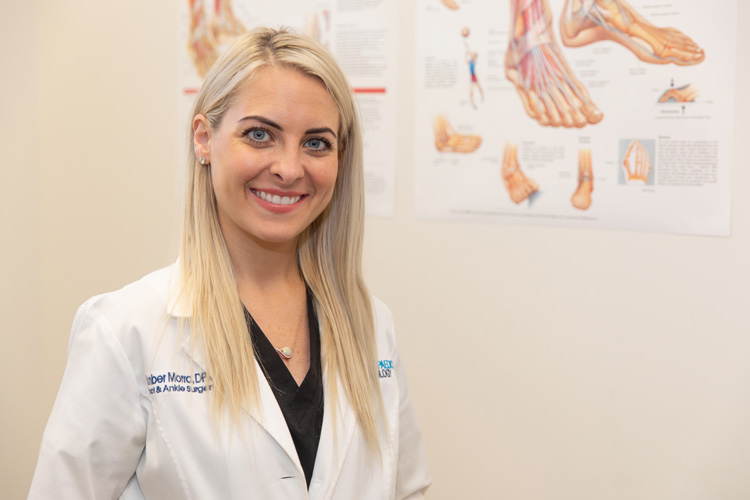Bothered by bunions?
According to newly arrived advanced foot and ankle surgery specialist Dr. Amber Morra at Vero Orthopaedics & Neurology, you don’t need to be bothered by them anymore.
Morra says with advances in minimally invasive surgical procedures, along with impressive new tools, “your bunion surgery time is significantly reduced. Your incisions are significantly smaller and your foot can be weight-bearing the same day” as the procedure.
That’s an impressive claim given that bunions are not just swollen red bumps on the side of your big toe.
They are, instead, a complex deformity that is caused by the rotation of the first metatarsal bone inside the big toe. Or, as the Mayo Clinic outs it, “a bunion is a bony bump that forms on the joint at the base of your big toe. It forms when your big toe pushes against your next toe, forcing the joint of your big toe to get bigger and stick out.”
The most obvious symptoms are pain, swelling and redness around the big toe joint.
If you have a bunion, you can probably blame it on your relatives.
Harvard Medical School says “bunions run in families, because foot type (shape and structure) is hereditary and some types are more prone to bunions than others. Low arches, flat feet and loose joints and tendons all increase the risk. The shape of the metatarsal head (the top of the first metatarsal bone) also makes a difference: if it’s too round, the joint is less stable and more likely to deform.”
Morra, who went to medical school in Miami, served her residency at Yale and did her fellowship training in Ohio, quickly turns to the nuts and bolts of today’s minimally invasive bunion treatments.
“Technology,” she says, “has advanced so much that we’re able to use much smaller incisions now.”
Podiatry Today agrees. It says “modern advances in minimally invasive bunion surgery techniques and technology have allowed for tiny incisions, a walking recovery, less post-operative pain, shorter operative time and an overall easier recovery.”
Just how tiny are those incisions today? They can range from 1/8 of an inch to 1/2 of an inch – that is compared to traditional bunion surgery incisions that ranged from 2 inches to 6 inches.
And, according to Morra, there’s even better news when it comes to the bone shaving or bone cutting needed to correct the misalignment of that first metatarsal bone.
The “burrs” that grind or cut the bone, according to Morra, are designed so that they will not cut through human flesh. They will only cut bone.
“With the new technology and the design of the tools, they are high velocity but low torque. You’re not going to destroy the soft tissue. They’re designed just to cut through bone. So we have a safety net knowing that the soft tissue and the vasculature and the nerves are protected.”
That’s absolutely vital to avoiding complications because these burrs, as Morra says, “start running at around 3,000 RPM.”
She says she had her doubts at first about claims for the advanced tools.
With a grinding or cutting tool spinning that fast, “I was skeptical about it. Like, hey! How is this going to cut through bone but it’s not going to cut through my skin? But it really does work that way.”
Meanwhile, fluoroscopy, a type of continuous X-ray imaging, allows Morra to see the bone clearly and determine the correct alignment of the joint.
With this procedure, says Duke Health, “there is minimal scar tissue, faster healing and no damage to tissues crossing the big toe joint, eliminating the complication of joint stiffness.”
Of course, as an advanced foot and ankle surgery specialist, Morra also treats Achilles tendinitis, broken bones, stress fractures, Lisfranc injuries, Plantar fasciitis, hammertoes and a host of other foot-related problems. She also does total ankle replacements.
Dr. Amber Morra, who arrived here in September, is with Vero Orthopaedics & Neurology at 1155 35th Lane, Suite 100 in Vero Beach. The phone number is 772-569-2330.

